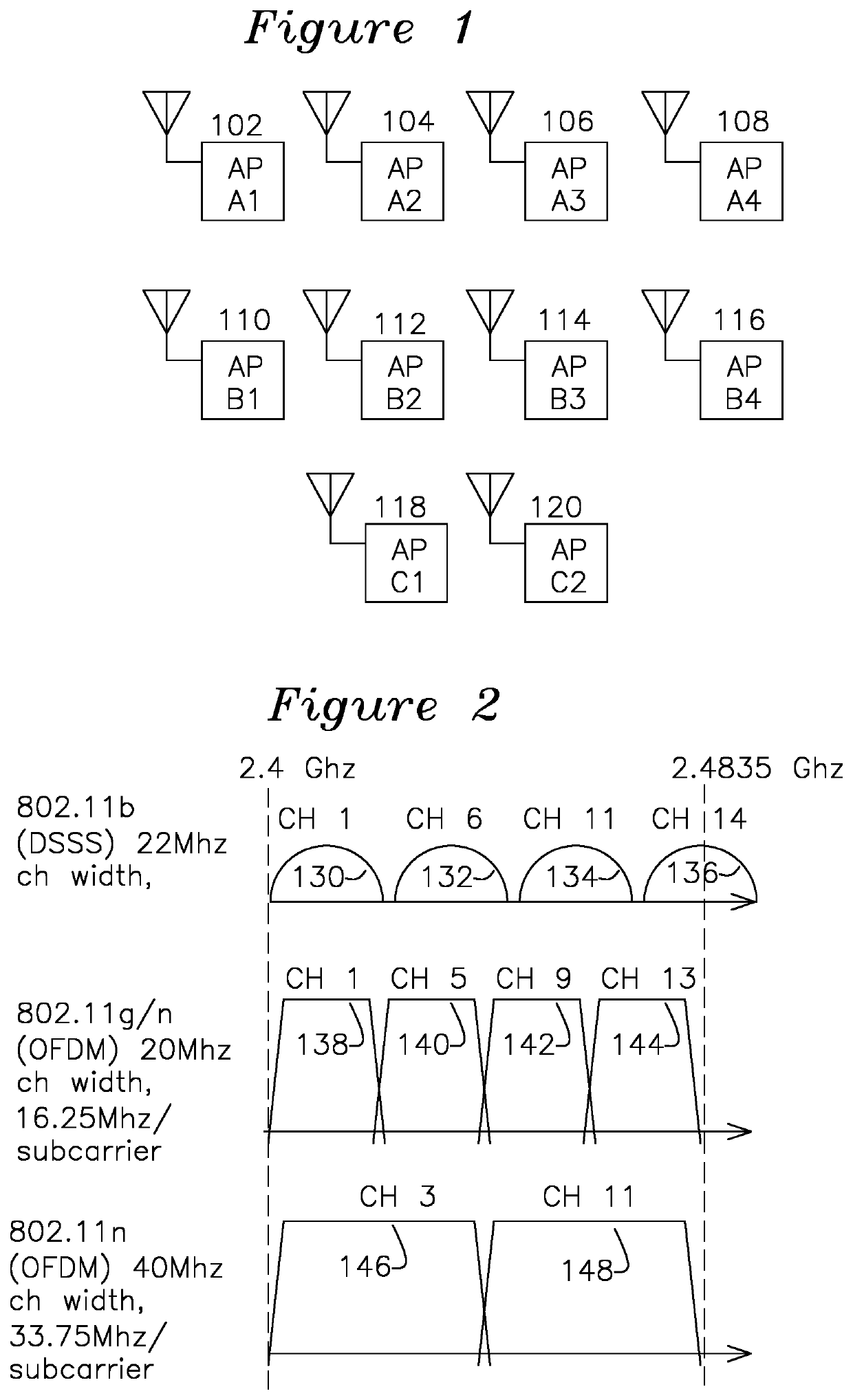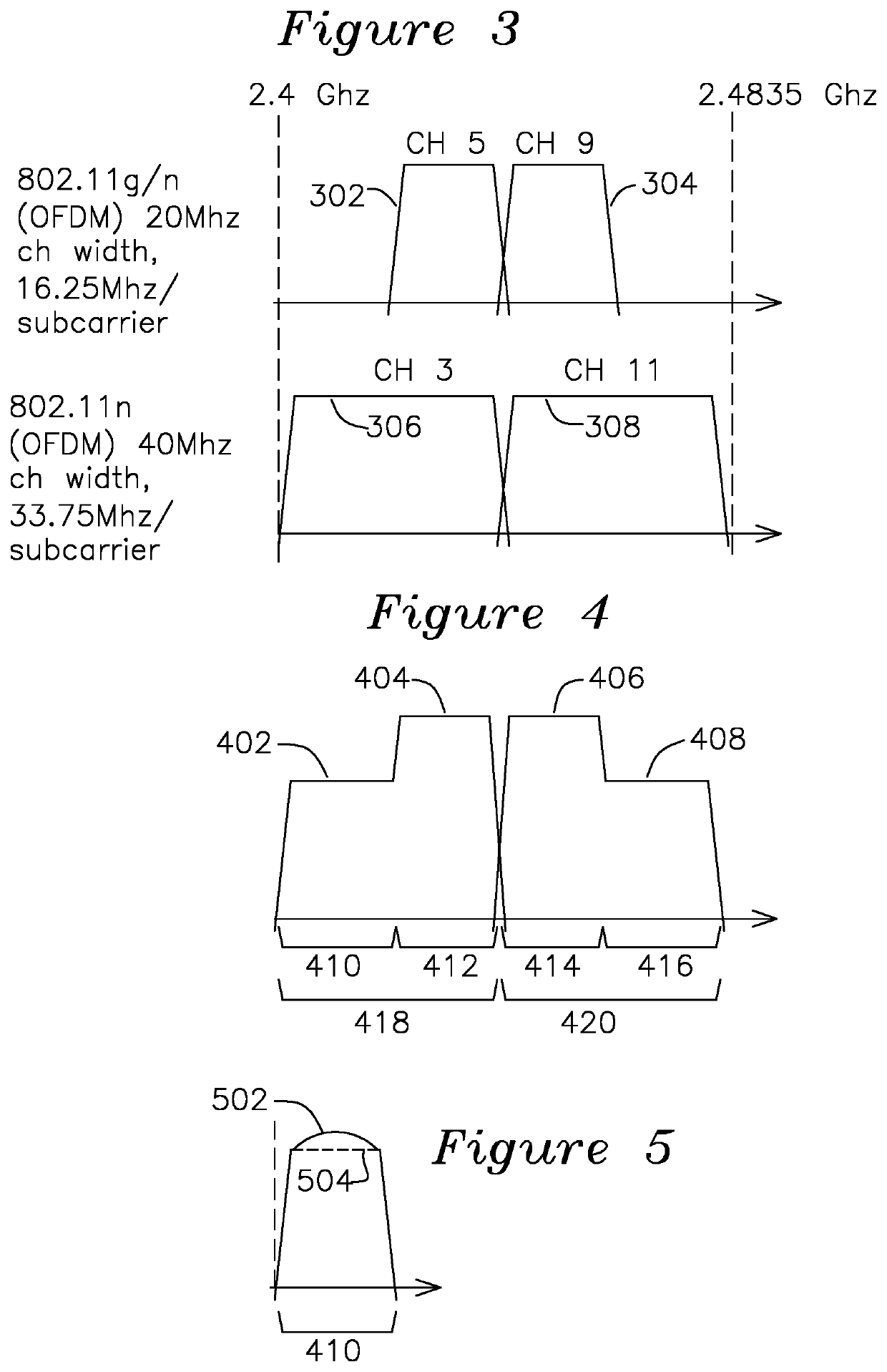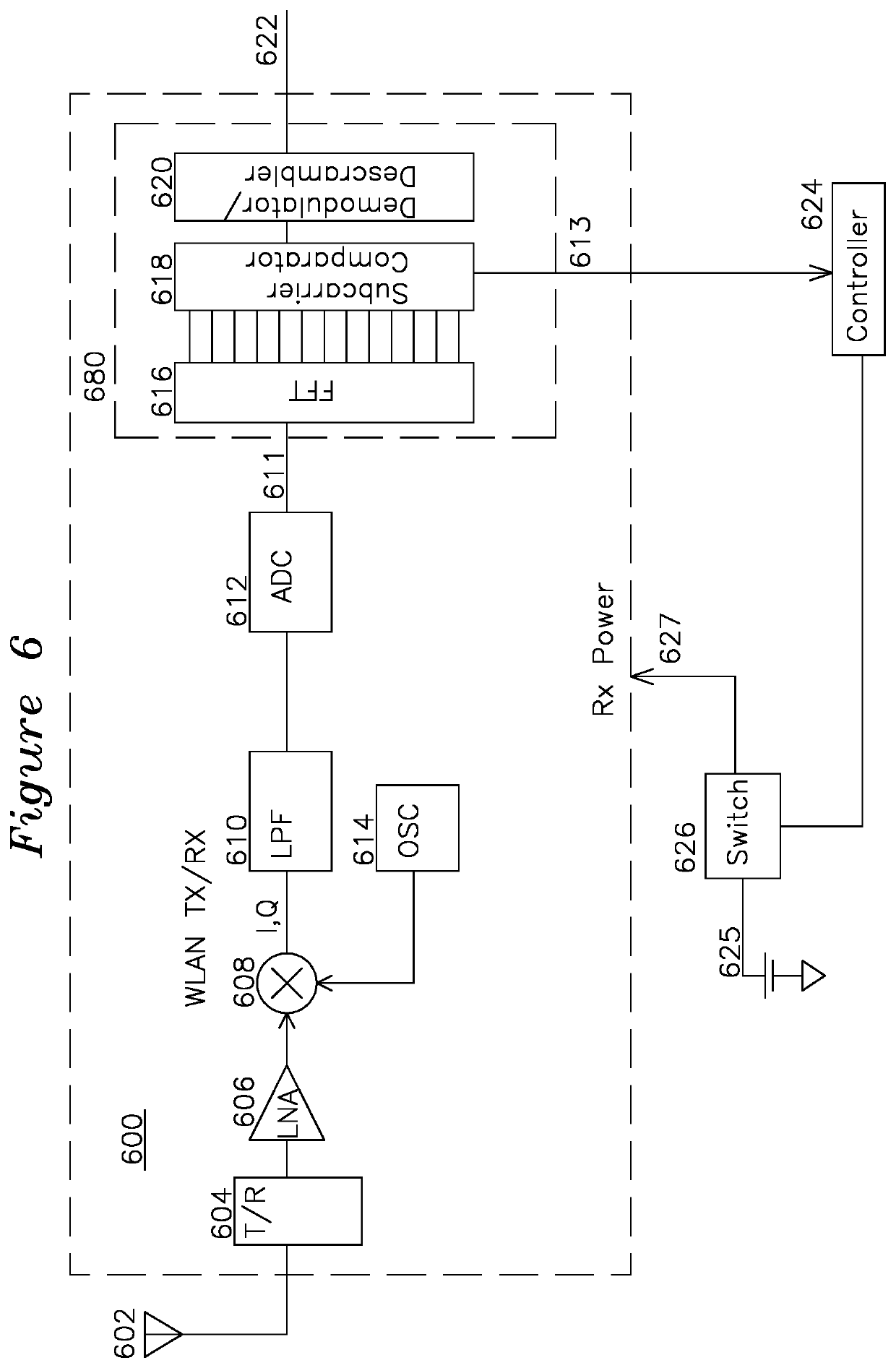Same-Channel Interference Detection and Early Receiver Powerdown for OFDM Signal Processor
a signal processor and same-channel technology, applied in the direction of transmission monitoring, multiple modulation transmitter/receiver arrangement, high-level techniques, etc., can solve the problem of additional channel interference opportunities, unreliable backoff mechanism, power consumption of the device determining the usable lifetime of the equipmen
- Summary
- Abstract
- Description
- Claims
- Application Information
AI Technical Summary
Benefits of technology
Problems solved by technology
Method used
Image
Examples
Embodiment Construction
[0033]FIG. 1 shows a plurality of access points (AP) A1102, A2104, A3106, A4108, which may be operating using the IEEE 802.11b WLAN protocol with Direct Sequence Spread Spectrum (DSSS) modulation. A typical DSSS spectral plot is shown in FIG. 1130. Example access points B1110, B2112, B3114, and B4116 are operative using IEEE 802.11g or 802.11n WLAN protocols, which utilize a plurality of individual subcarriers with uniform subcarrier energy, in one mode for B1110, B2112, B3114, and B4116 with 20 Mhz channel width and 16.25 Mhz subcarrier spacing (shown, for example, as FIG. 2138), and in another mode for access points C1118 and C2120 with 40 Mhz channel widths and 33.75 Mhz subcarrier spacing, as shown in a typical spectral plot 146 of FIG. 2. It is understood that the schematic plots of FIG. 2 for 802.11b are showing quasi-continuous DSSS spectrum, whereas the plots for 802.11g / n are showing Orthogonal Frequency Division Multiplex (OFDM), which comprise a plurality of discrete subc...
PUM
 Login to View More
Login to View More Abstract
Description
Claims
Application Information
 Login to View More
Login to View More - R&D
- Intellectual Property
- Life Sciences
- Materials
- Tech Scout
- Unparalleled Data Quality
- Higher Quality Content
- 60% Fewer Hallucinations
Browse by: Latest US Patents, China's latest patents, Technical Efficacy Thesaurus, Application Domain, Technology Topic, Popular Technical Reports.
© 2025 PatSnap. All rights reserved.Legal|Privacy policy|Modern Slavery Act Transparency Statement|Sitemap|About US| Contact US: help@patsnap.com



